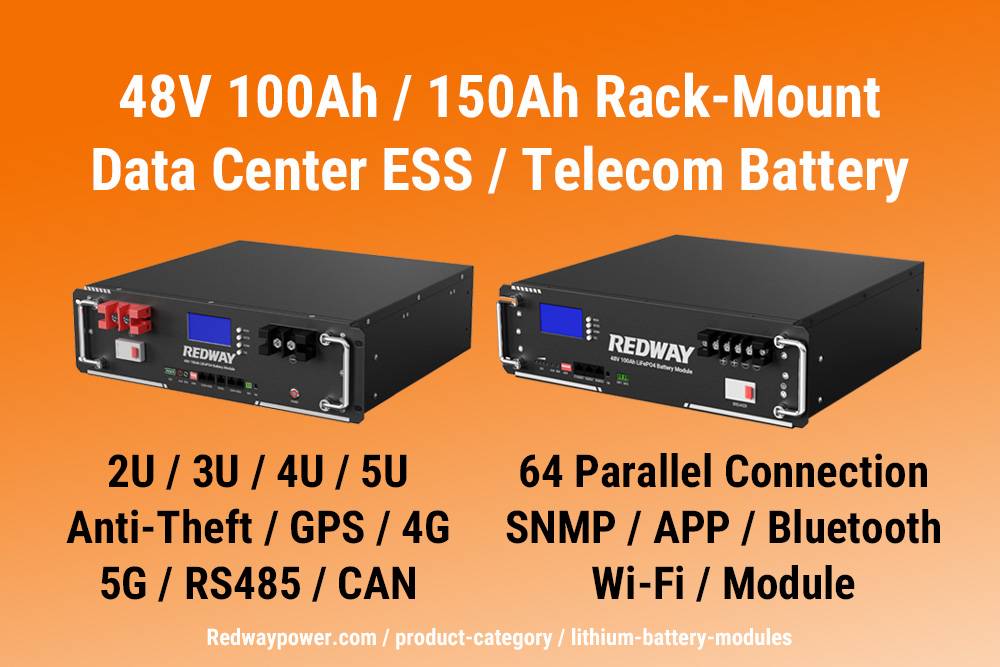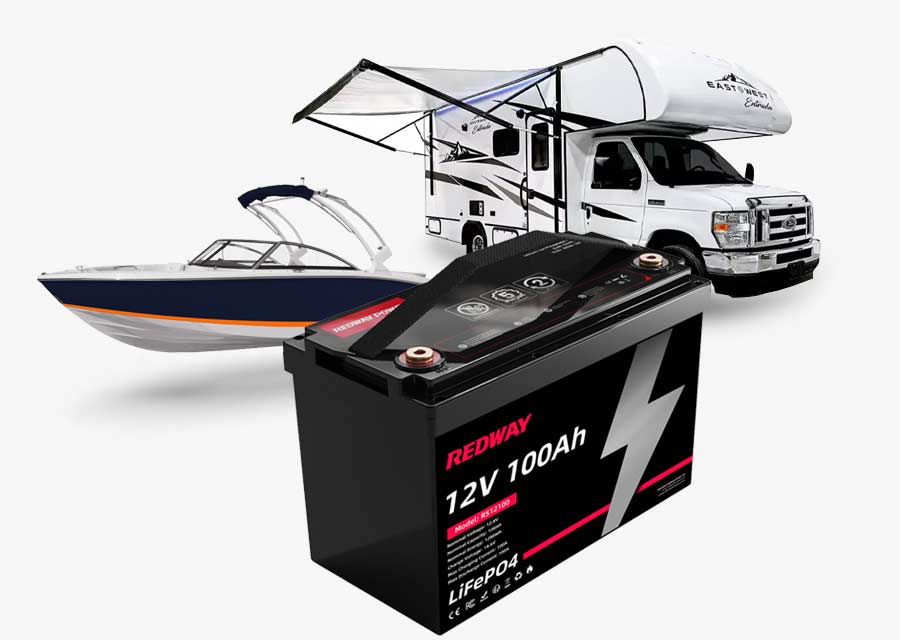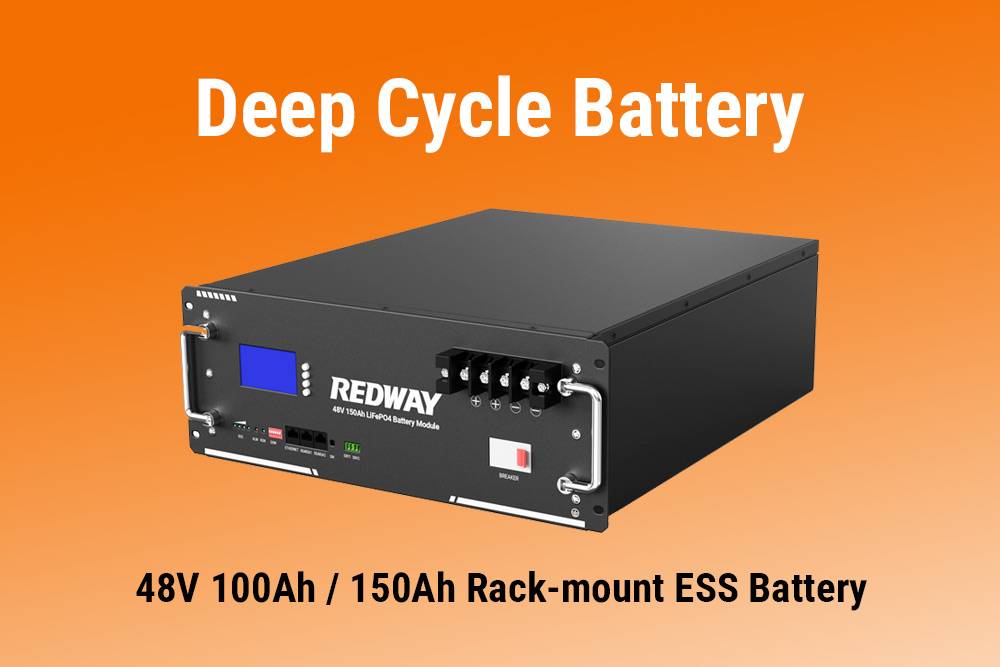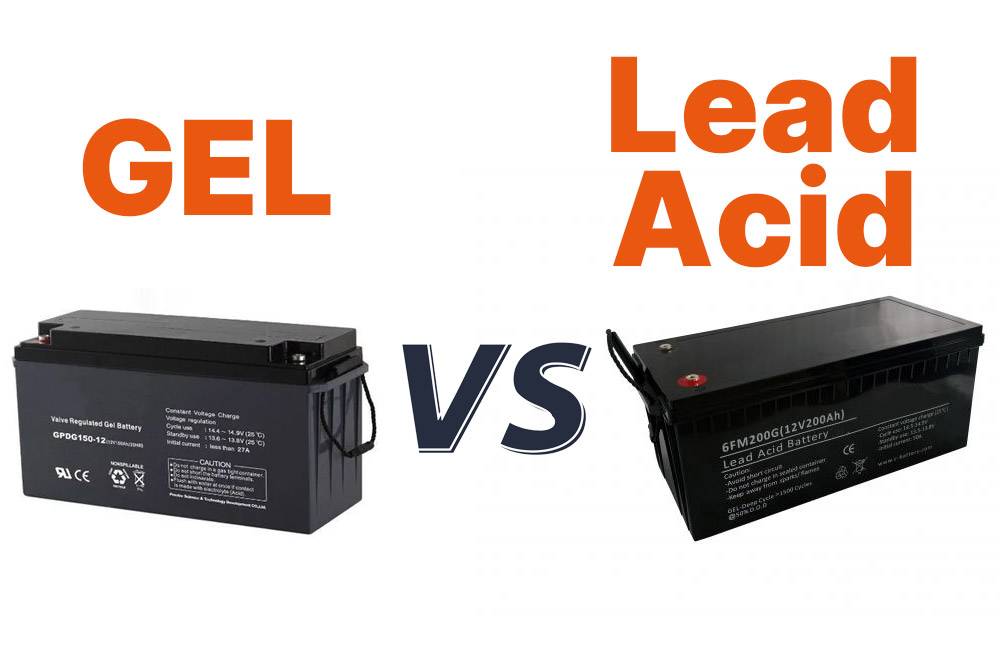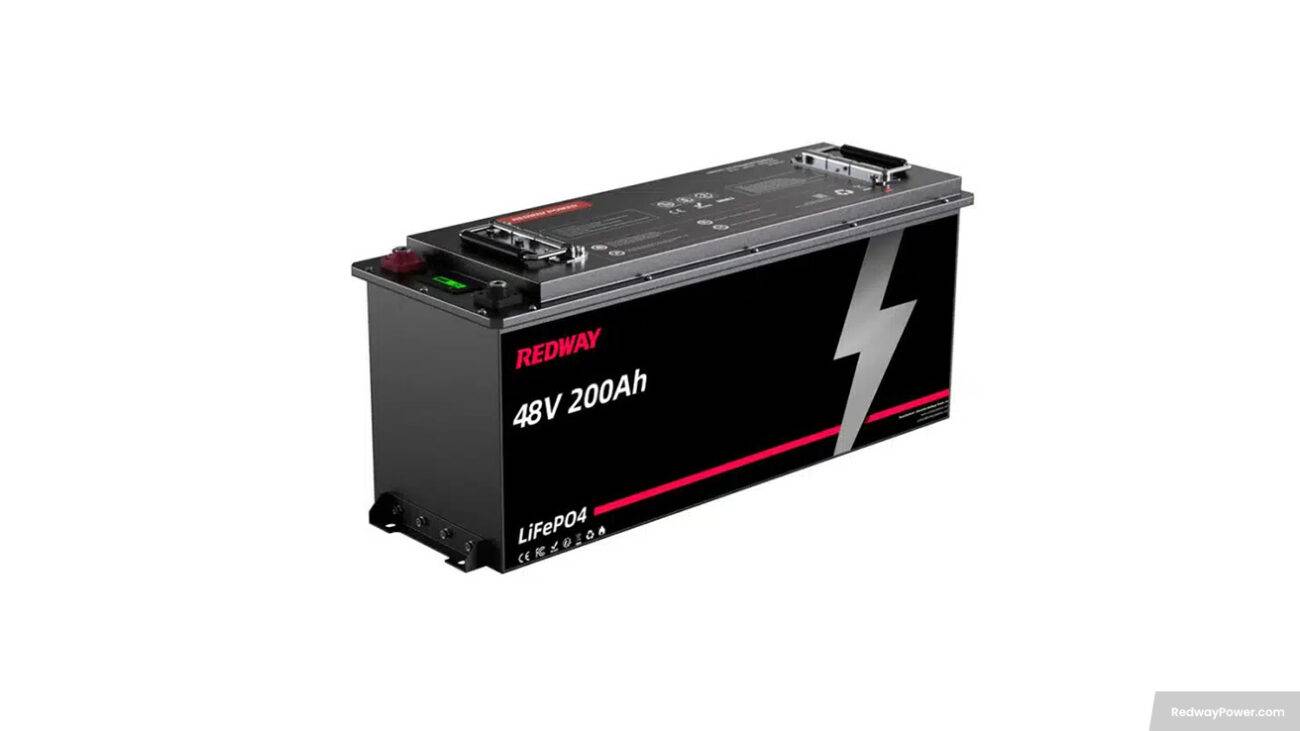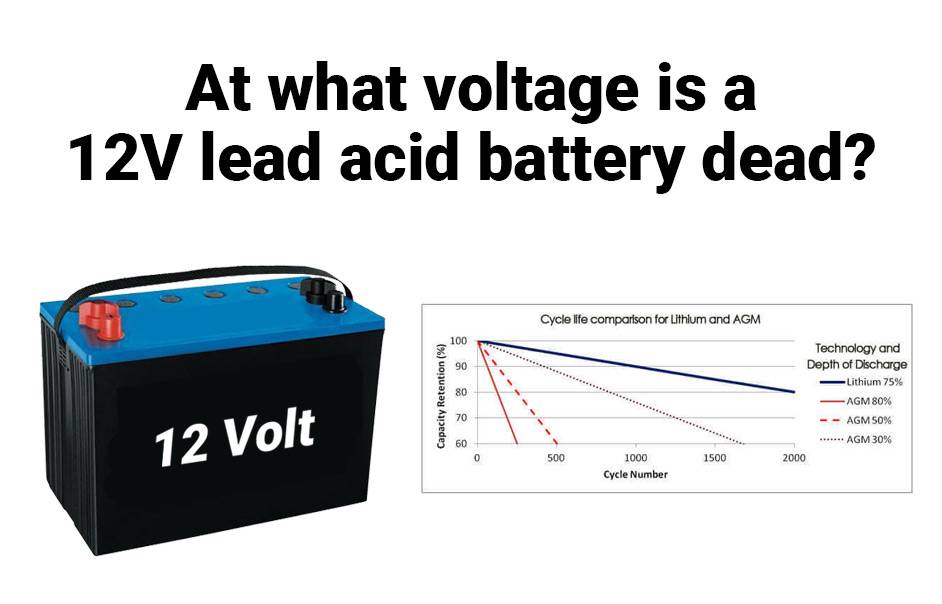Deep cycle batteries are specialized energy storage devices designed for prolonged, consistent power delivery. They feature thicker plates and are ideal for applications requiring sustained energy, such as RVs, boats, and solar power systems. Unlike traditional lead-acid batteries, deep cycle batteries prioritize endurance over quick bursts of power, offering reliability and longevity.
What is Deep Cycle Battery?
How to Know A Battery is Deep Cycle or Not?
To determine if a battery is a deep cycle battery, you can look for several signs:
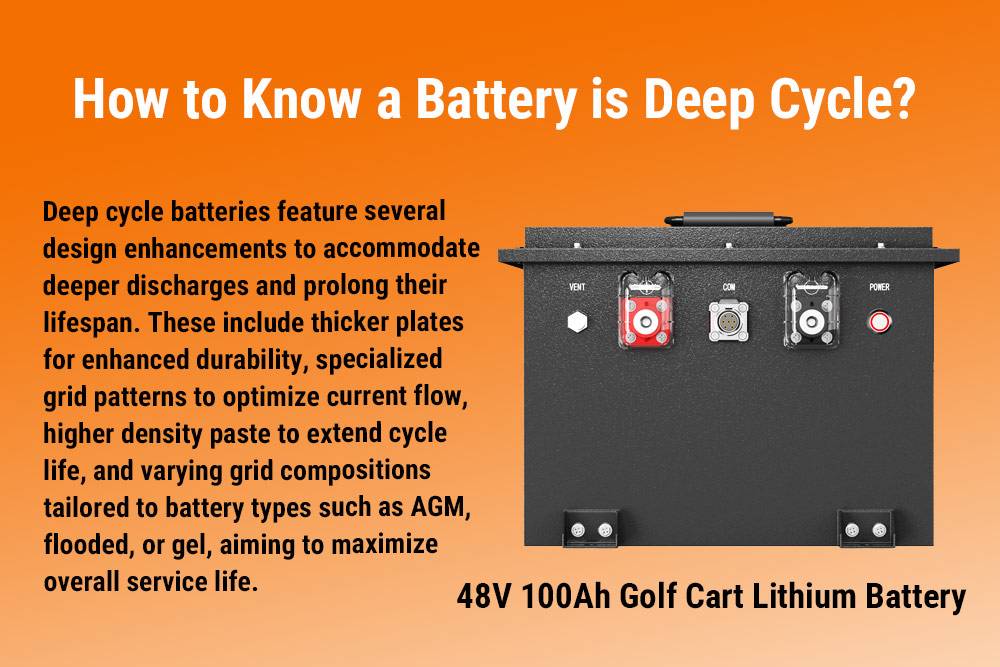
- Construction: Deep cycle batteries typically have thicker plates compared to regular batteries. These thick plates enable them to withstand repeated discharging and recharging cycles without getting damaged.
- Capacity: Deep cycle batteries have higher amp-hour ratings compared to regular batteries. This means they can provide power for longer periods before needing to be recharged.
- Manufacturer’s Labeling: Check the packaging or casing for keywords like “deep cycle” or “long-life” in the product description or name. Some batteries are specifically labeled as “deep-cycle” or “marine” types.
- Voltage Stability: Deep cycle batteries maintain a relatively stable voltage output throughout their discharge process. Regular batteries may experience voltage drop as they deplete their charge.
- Reserve Capacity: Deep cycle batteries usually have higher reserve capacities compared to regular batteries. Reserve capacity refers to how long the battery can run under specific conditions before dropping below its minimum voltage threshold.
By examining these factors, you can determine whether your battery is indeed a deep cycle type or not.
Deep Cycle Battery vs Lead-Acid Battery
Deep cycle batteries are typically not traditional lead-acid batteries, but a type of battery specifically designed to be discharged deeply over long periods of time. They typically have thicker plates and are specially designed to provide reliable performance under repeated deep discharge and charge conditions. Common deep cycle battery types include lead-acid deep cycle batteries, gel batteries, AGM batteries and lithium batteries.
What is Lead-Acid Battery?
A lead-acid battery is a common type of rechargeable battery used in various everyday vehicles and applications. It provides short bursts of power, particularly for starting vehicle engines, and is commonly found in cars, SUVs, trucks, and other similar vehicles.
- Structure and Function:
- Six Connected Cells: Lead-acid batteries typically contain six connected cells, each consisting of lead and lead dioxide plates submerged in sulfuric acid electrolyte.
- Short Burst Power: They are designed to deliver short bursts of power, primarily utilized for starting vehicle engines, with sustained energy provided by the alternator during operation.
- Use Cases:
- Everyday Vehicles: Lead-acid batteries are commonly used in everyday vehicles such as cars, SUVs, and trucks, where they power essential systems like lights and ignition.
- Short Burst Applications: They are ideal for applications requiring short bursts of power, making them suitable for various automotive and industrial purposes.
Diffrences between Deep Cycle and Lead-Acid Battery
Cold Cranking Amps (CCA) vs. Reserve Capacity (RC):
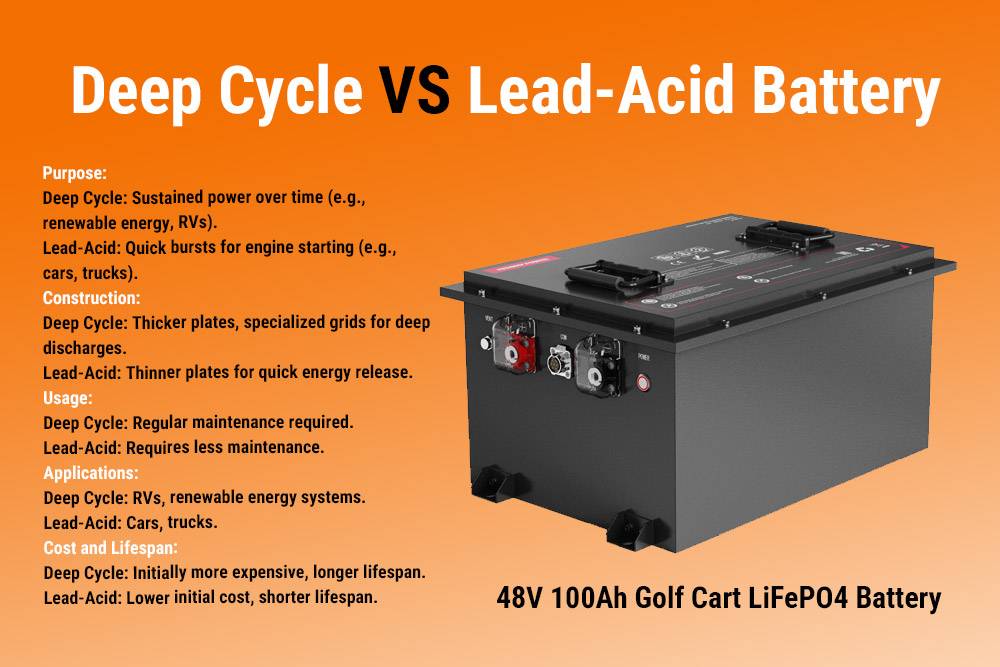
Lead-acid batteries offer higher CCA for starting power, while deep cycle batteries have higher RC for sustained energy.
Cycle Lifespan:
Lead-acid batteries last about 200 cycles, while deep cycle batteries last around 2,000 cycles.
Size and Weight:
Deep cycle batteries are smaller and lighter, making them suitable for compact installations in recreational vehicles.
- Design and Purpose:
- Deep Cycle Battery: Specifically designed for repetitive discharges and recharges, deep cycle batteries are ideal for applications requiring sustained power over extended periods, such as renewable energy systems, golf carts, and RVs.
- Lead-Acid Battery: Lead-acid batteries, including starter batteries, are designed primarily to provide short bursts of power to start vehicle engines and are commonly found in cars, trucks, and other automotive applications.
- Construction:
- Deep Cycle Battery: Deep cycle batteries typically feature thicker plates, specialized grid patterns, and higher density paste to handle deeper discharges and prolong cycle life.
- Lead-Acid Battery: Lead-acid batteries may have thinner plates optimized for quick energy release during engine starting.
- Usage and Maintenance:
- Deep Cycle Battery: Requires regular maintenance to maximize lifespan, including monitoring fluid levels and voltage post-charging.
- Lead-Acid Battery: Generally requires less maintenance compared to deep cycle batteries, primarily needing occasional checks on fluid levels and charging status.
- Applications:
- Deep Cycle Battery: Commonly used in renewable energy systems, recreational vehicles, boats, and backup power systems where sustained and reliable power is essential.
- Lead-Acid Battery: Widely used in everyday vehicles like cars, SUVs, and trucks for engine starting and powering essential systems.
- Cost and Lifespan:
- Deep Cycle Battery: Generally more expensive upfront but offers a longer lifespan and higher cycle durability, making it cost-effective over time.
- Lead-Acid Battery: Often more affordable initially but may have a shorter lifespan and lower cycle durability, requiring replacement more frequently.
Pros and Cons, Deep Cycle vs Lead-Acid Battery
Deep Cycle Batteries:
Pros: Longer cycle lifespan, higher reserve capacity, smaller size.
Cons: Lower CCA, less starting power, manual recharging required.
Lead-Acid Batteries:
Pros: Higher CCA, automatic recharging by alternator, widespread availability.
Cons: Limited cycle lifespan, regular maintenance required, temperature sensitivity.
Understanding these distinctions helps in selecting the appropriate battery type for specific vehicle and power supply needs, ensuring optimal performance and longevity.
Redway Power Deep Cycle Battery Lines
Redway Power offers various deep cycle battery lines tailored to different applications, including SLA and lithium options.
The Redway series cater to SLA batteries, while the PSL-SC and PSL-BT series feature lithium deep cycle batteries.
By understanding deep cycle battery nuances and following best practices for charging and maintenance, users can maximize the potential of these energy storage solutions.
In conclusion, deep cycle batteries are robust power sources designed for sustained, consistent power delivery over extended periods. Proper understanding, maintenance, and charging techniques ensure optimal performance and longevity for various applications.
FAQs
How do Deep Cycle and Regular Batteries differ in charging?
Can Regular Batteries substitute for Deep Cycle Batteries?
What are Deep Cycle and Regular Batteries’ key features?
Characteristics and advantages of Lithium Iron Phosphate (LiFePO4) batteries?
How do Deep Cycle and Regular Batteries vary in recharging?
What are Deep Cycle and Regular Batteries commonly used for?
What are dual-purpose batteries, and how do they differ from deep cycle batteries?
Dual-purpose batteries are designed to provide both starting power for engines and cycling capabilities for running accessories. Deep cycle batteries, on the other hand, are specifically engineered for sustained power over extended periods without being depleted quickly.
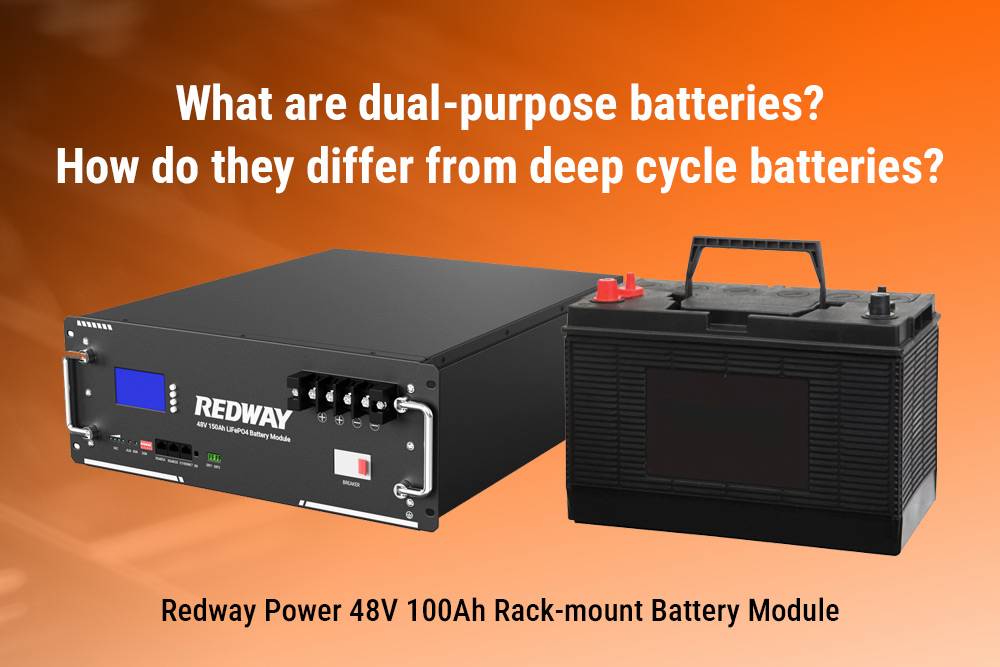
What are the best uses for dual-purpose and deep cycle batteries?
Dual-purpose batteries are ideal for marine and RV applications where occasional bursts of energy are needed for engine starting and running accessories. Deep cycle batteries shine in renewable energy systems, golf carts, electric vehicles, and off-grid cabins, where consistent power delivery over long periods is required.
What are the pros and cons of dual-purpose batteries?
Pros: Versatility for both starting power and cycling capabilities, suitable for intermittent use. Cons: May not excel in either area compared to dedicated starter or deep cycle batteries, struggles with heavy-duty applications.
What are the pros and cons of deep cycle batteries?
Pros: Long-lasting power over extended periods, superior cycling performance and longevity. Cons: Lower cold-cranking amps, may struggle as primary starting batteries in colder climates.
How do I determine which battery type is right for me?
Consider your specific needs and usage patterns, including the capacity and lifespan of each battery type, maintenance requirements, and cost. Consult with professionals or experts for guidance based on your circumstances.
How do I maintain and replace my batteries?
Regularly inspect the battery for signs of damage or corrosion, keep it charged, avoid overcharging, and store it properly. Replace the battery when signs of reduced capacity or physical damage occur, ensuring the replacement matches your needs and requirements.
What are Group 31 deep cycle batteries?
Group 31 deep cycle batteries are specialized energy storage devices designed to provide long-lasting power for applications requiring sustained energy output, such as RVs, boats, and off-grid systems. They are known for their thick plates and robust construction, allowing them to withstand heavy usage and frequent charging cycles.
How do Group 31 deep cycle batteries differ from traditional car batteries?
Unlike traditional car batteries designed for short bursts of energy, Group 31 deep cycle batteries are built to deliver a steady and consistent flow of power over an extended period. They prioritize endurance and reliability over quick bursts of power, making them ideal for applications requiring sustained energy output.
What factors affect the lifespan of Group 31 deep cycle batteries?
Factors such as usage patterns, temperature, maintenance practices, charging habits, and brand quality can all impact the lifespan of Group 31 deep cycle batteries. Proper care and maintenance, including regular inspection, cleaning, and appropriate charging, can help extend their lifespan.
How can I extend the life of my Group 31 deep cycle battery?
To extend the life of your Group 31 deep cycle battery, ensure it is properly charged, avoid storing it in extreme temperatures, regularly maintain it, use energy-efficient appliances, and be mindful of how you discharge it. Following these tips can help maximize your battery’s lifespan.
